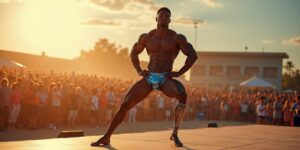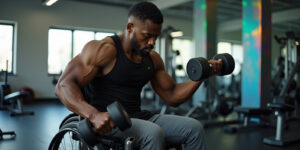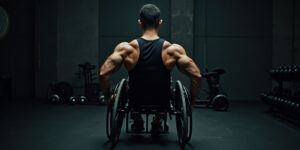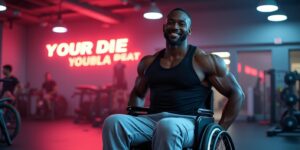Have you ever noticed how some bodybuilders seem to have smaller heads in comparison to their massive, muscular bodies? This phenomenon has been a topic of discussion among the fitness community for years. It’s not just an optical illusion; it’s a real thing.
In this blog, we will delve into the science behind this phenomenon and explore factors that contribute to creating such a perception. We will also discuss case studies of famous bodybuilders with smaller heads and how it impacts their professional career. Lastly, we will share tips on how to maintain head-body proportion while still pursuing a career in bodybuilding.
Keep reading to uncover all the details about this fascinating subject!
The Paradox of Bodybuilders with Small Heads
To the uninitiated, the sight of a bodybuilder with a small head might raise eyebrows and provoke questions. How is it possible for an individual to develop such immense muscle mass while maintaining a head that seems incongruent with their body? To unravel this paradox, we need to consider several factors.
- Muscle Hypertrophy and Proportion
The primary goal of bodybuilding is to achieve muscle hypertrophy, which involves the enlargement of muscle fibers through resistance training. In this pursuit, bodybuilders train specific muscle groups intensively, leading to dramatic muscle growth. However, the head is not a muscle, and therefore, it doesn’t respond to hypertrophy in the same way. Instead, the size of an individual’s head is largely determined by their genetics and skeletal structure.
- Anabolic Steroids and Growth Hormone
While genetics play a significant role in determining head size, the use of anabolic steroids and growth hormone in bodybuilding can influence overall growth, including the skull. These substances promote muscle growth throughout the body, potentially affecting the proportions of a bodybuilder’s head relative to their body. However, the exact mechanisms behind this phenomenon are not yet fully understood.
The Potential Consequences
While a smaller head may not necessarily pose immediate health risks, there are potential consequences to consider:
- Appearance and Public Perception
Bodybuilders with small heads may experience unique challenges in terms of public perception and self-esteem. They might be subjected to ridicule or skepticism due to their unconventional appearance. However, it’s essential to remember that bodybuilders dedicate themselves to their craft with passion and discipline, and their commitment to their goals should be respected.
- Safety and Health
The use of anabolic steroids and growth hormone, which are sometimes associated with bodybuilders, can have adverse health effects. These substances can impact cardiovascular health, hormone balance, and organ function. Therefore, it’s crucial for bodybuilders to prioritize their health and work with healthcare professionals to manage any potential risks associated with their training regimen.

Frank Zane
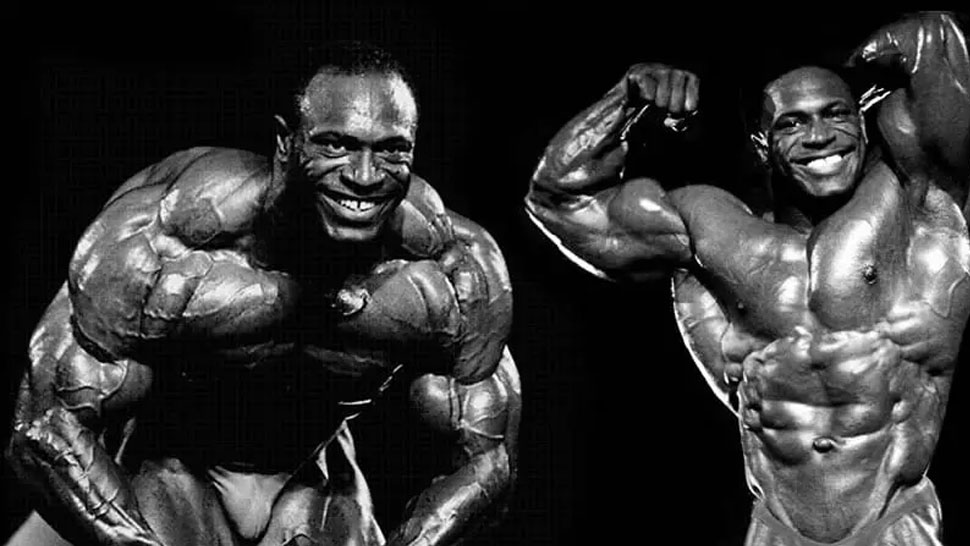
Lee Haney
The Unique Perspectives of Bodybuilders with Small Heads
- Dedication and Discipline
Bodybuilders with small heads exemplify the dedication and discipline required to achieve extraordinary physical transformations. Their commitment to rigorous training regimens, strict diets, and lifestyle choices demonstrates the remarkable lengths they are willing to go to attain their goals.
- Breaking Stereotypes
The presence of bodybuilders with small heads challenges conventional stereotypes associated with muscularity. It underscores the idea that there is no one-size-fits-all definition of beauty or strength. In the diverse world of bodybuilding, individuals with varying body proportions find success and recognition.
- Genetic Variation
The phenomenon of bodybuilders with small heads highlights the incredible diversity of the human body. It reminds us that genetics play a crucial role in determining our physical attributes, and not everyone will achieve the same proportions or physique, even with the same level of effort.
How Bodybuilding Can Create a Perception of Smaller Heads?
The pronounced muscular development in bodybuilders highlights the apparent disparity in size, while their well-defined musculature draws attention away from the head. Bodybuilding poses and angles further accentuate the body’s proportions, emphasizing the overall physique rather than the head. This focus on body aesthetics instills an unconscious perception of smaller heads, as the attention is primarily directed towards the impressive muscle mass. Consequently, the combination of these factors effectively distracts from the actual head size.
Unraveling the Illusion: The Science Behind It
The illusion of smaller heads in bodybuilders is a result of visual perception. Visual cues, such as body proportions and muscle definition, influence how we perceive head-body ratios. The brain tends to focus on the most noticeable features, downplaying the size of the head. Gestalt principles of perception also come into play, affecting our perception of the head-body ratio. Additionally, the brain’s natural tendency to simplify complex stimuli contributes to the illusion. The phenomenon of bodybuilders with seemingly small heads can be attributed to these scientific factors.
Do all bodybuilders have small heads?
It is a misconception that all bodybuilders have significantly smaller heads. Head size in bodybuilders is influenced by individual genetic factors, and some may have naturally larger heads even with muscular development. Bodybuilders with proportionate head-body ratios appear more balanced, but variations in head size among bodybuilders are expected.
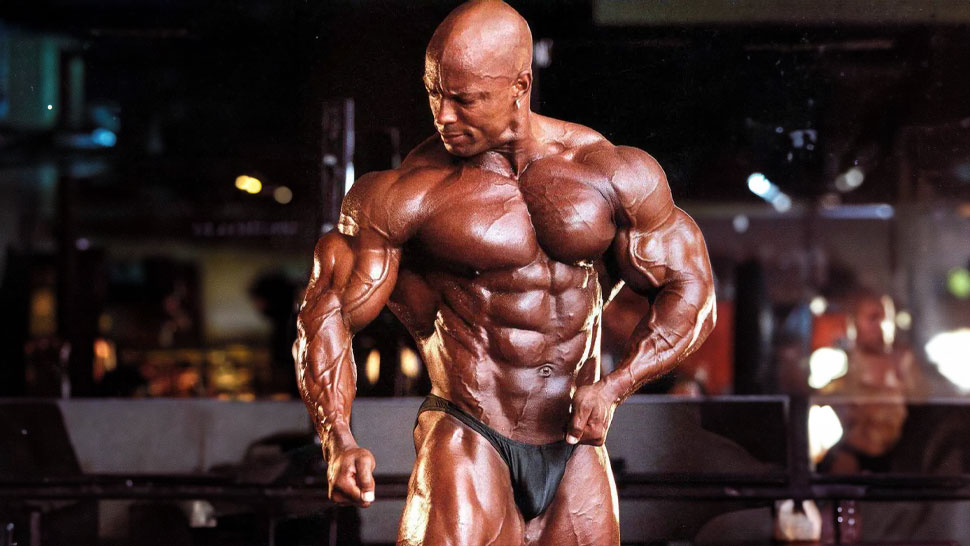
Shawn Ray

Kevin Levrone
Case Studies: Bodybuilders with Smaller Heads
There are a number of bodybuilders with smaller heads in proportion to their bodies. Some of the most notable examples include:
- Frank Zane was known for his incredible symmetry and proportions, including his relatively small head. He won three Mr. Olympia titles in the 1970s.
- Lee Haney is another former Mr. Olympia champion with a smaller head. He won eight titles in the 1980s and 1990s.
- Flex Wheeler is one of the most popular bodybuilders of all time, but he is also known for his small head. He won the Arnold Classic four times and was a multiple Mr. Olympia runner-up.
- Shawn Ray was another top bodybuilder with a small head. He was known for his incredible muscle density and conditioning.
- Kevin Levrone is a massive bodybuilder with a relatively small head. He was a multiple Mr. Olympia runner-up and is considered one of the greatest bodybuilders of all time.
It is important to note that there is no one-size-fits-all answer to the question of why some bodybuilders have smaller heads than others. There are a number of factors that can contribute to this, including genetics, training methods, and diet.
One possibility is that some bodybuilders are simply genetically predisposed to having smaller heads. This is supported by the fact that many of the bodybuilders listed above have family members with similarly small heads.
Another possibility is that certain training methods may promote muscle growth in the body while not having the same effect on the head. For example, bodybuilders who focus on compound exercises that work multiple muscle groups at the same time may be more likely to develop a smaller head.
Finally, diet may also play a role in determining the size of a bodybuilder’s head. Bodybuilders who follow very low-calorie diets may experience muscle loss in the head, as well as other parts of the body.
It is also important to note that the size of a bodybuilder’s head is not necessarily an indication of their strength or overall physique. Some of the most successful bodybuilders in history have had smaller heads, such as Frank Zane and Lee Haney.
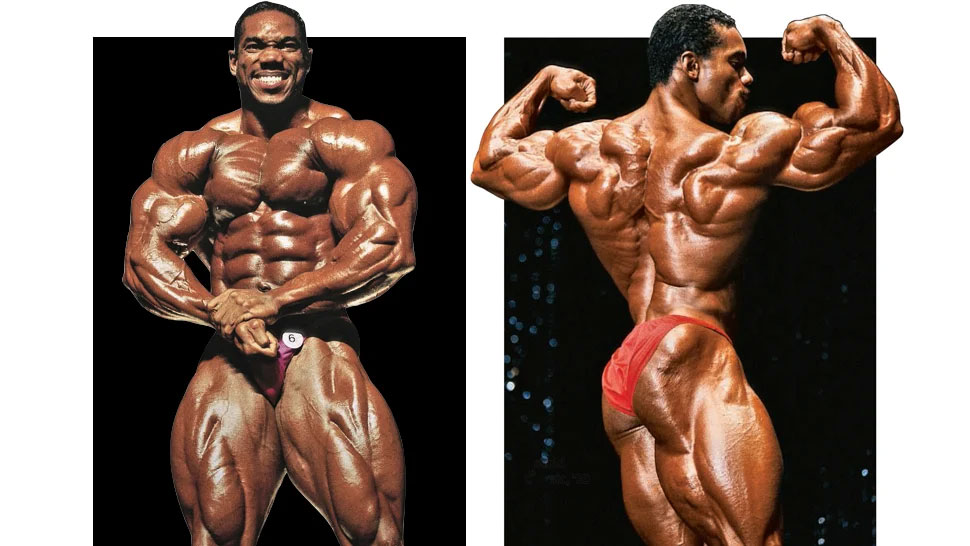
Lee Haney
Is there a way to maintain head-body proportion in bodybuilding?
Yes, there are a few ways to maintain head-body proportion in bodybuilding:
- Focus on compound exercises. Compound exercises work multiple muscle groups at the same time, which can help you to build muscle mass more evenly throughout your body. Some examples of compound exercises include squats, bench presses, deadlifts, and overhead presses.
- Train all muscle groups regularly. It’s important to train all of your muscle groups regularly, including your arms, legs, chest, back, shoulders, and core. This will help you to develop a balanced and proportional physique.
- Use progressive overload. Progressive overload is the key to building muscle mass. This means gradually increasing the weight or resistance you use in your workouts over time.
- Eat a healthy diet. Eating a healthy diet is essential for building muscle and maintaining a healthy body weight. Make sure to eat plenty of protein, complex carbohydrates, and healthy fats.
- Get enough sleep. Sleep is essential for muscle recovery and growth. Aim for 7-8 hours of sleep per night.
It’s also important to be realistic about your goals. Everyone’s body is different, and it’s not possible to achieve perfection. However, by following the tips above, you can develop a well-proportioned and muscular physique.
Let’s Sum Up
In conclusion, the phenomenon of bodybuilders with smaller heads can be attributed to several factors. Muscular hypertrophy, the process of muscle growth and development, plays a significant role in creating the illusion of smaller heads in bodybuilders. However, it is important to note that not all bodybuilders have smaller heads, and individual genetics also play a role in head-body proportion.
While maintaining a balanced head-body ratio may be challenging for bodybuilders, there are ways to work on overall proportion through targeted training and exercises. It is crucial to understand that bodybuilding is an art form that requires dedication and discipline, and the focus should always be on overall health and well-being rather than solely on appearance.


